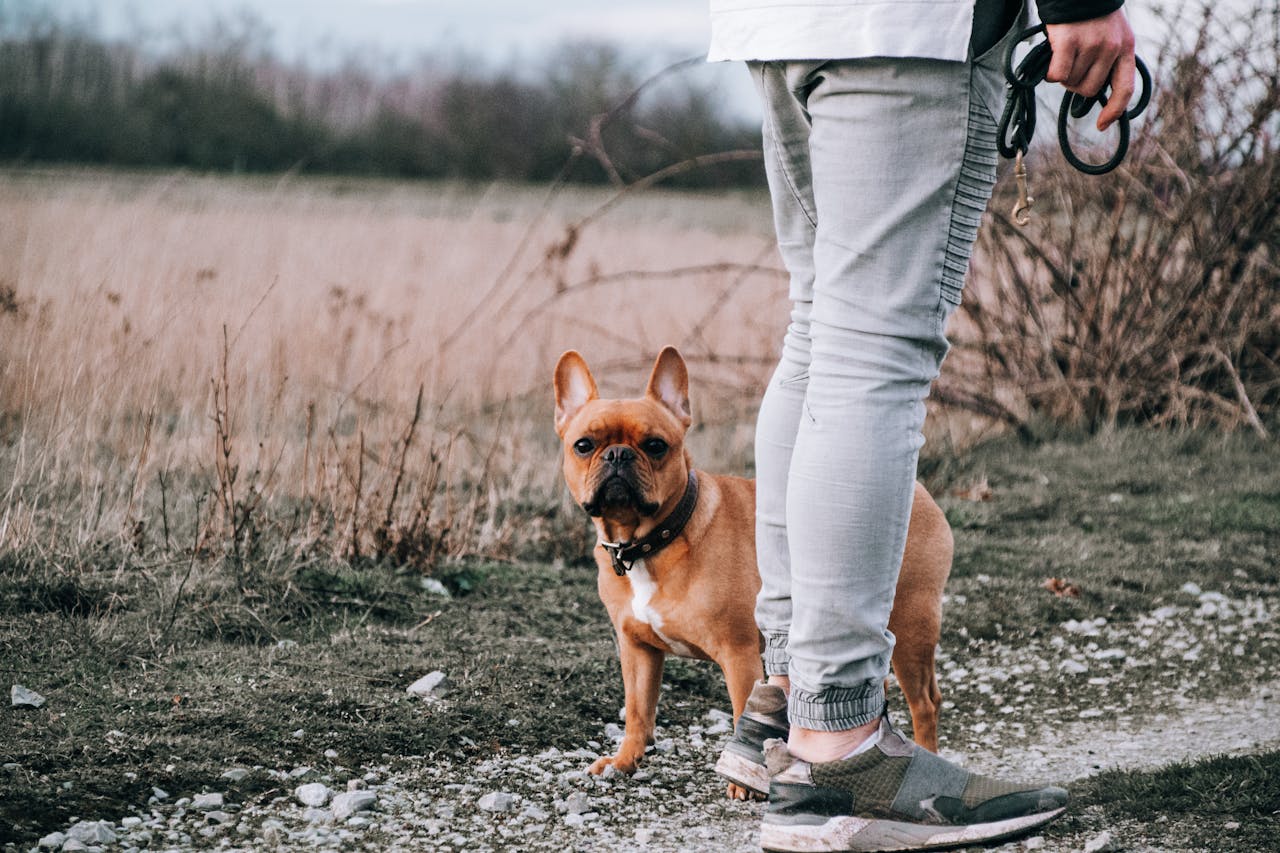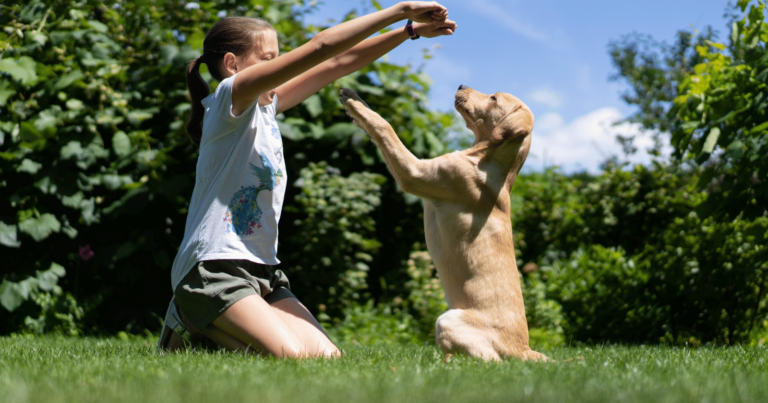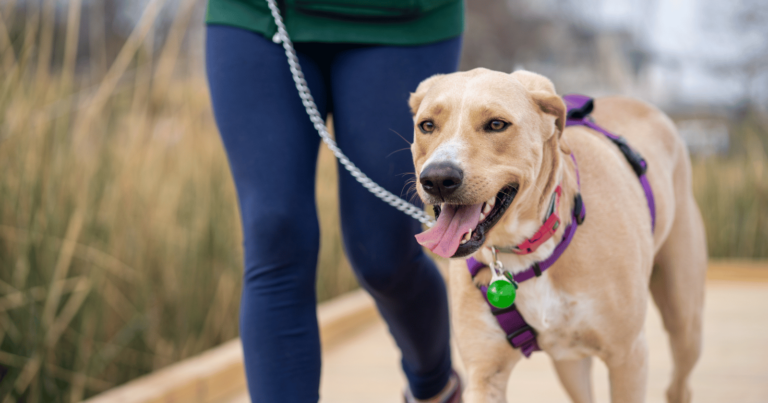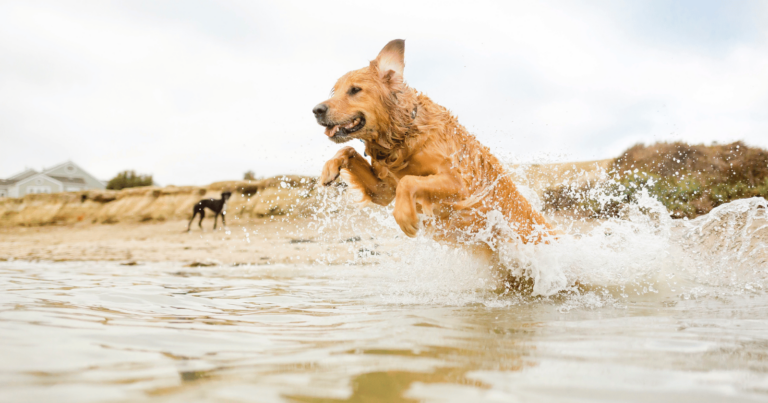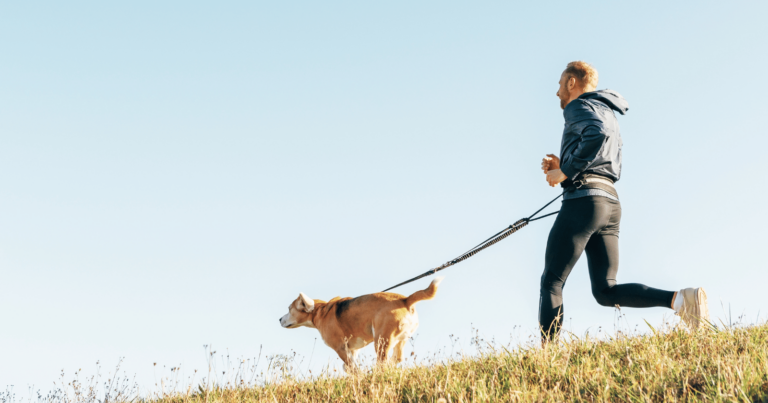Walking is an essential part of a dog’s routine.
It’s not just about exercise, but also about exploring their environment and socializing.
However, if your puppy is reluctant to go on walks, it can be a cause for concern.
But don’t worry, there’s no need to feel disheartened.
This issue is often temporary and can be resolved with a bit of patience and the right approach.
In this article, we’re going to explore nine effective solutions that can help motivate your pup to enjoy their walks.
1. Understand your puppy’s fear
First and foremost, it’s essential to understand why your puppy doesn’t like walks.
Often, fear or anxiety is the root cause.
The outside world can be overwhelming for a little pup.
They are exposed to a myriad of new sights, sounds, and scents.
This sensory overload can cause stress and make them reluctant to step out for walks.
To help your puppy overcome their fears, it’s key to take a slow and patient approach.
Don’t force them out the door.
Instead, gradually introduce them to the concept of walking outside.
Here are a few steps you can follow:
- Start by letting them explore your backyard or garden first.
- Allow them to become comfortable with their leash. You can do this by letting them wear it around the house.
- Once they’re used to the leash, take short trips just outside your home.
- Gradually increase the distance as they become more comfortable.
2. Make use of positive reinforcement
Positive reinforcement is a powerful tool in shaping your puppy’s behavior.
This simply means rewarding your pup for the behaviors you want, such as walking nicely.
Not only does it make walks more enjoyable for your puppy, but it also helps to build their confidence.
Start with small rewards for any progress they make.
For instance, reward them when they willingly put on their leash or step outside.
Treats are a great motivator for most dogs, but praise and petting can be equally effective.
Don’t forget to reward your pup during the walk as well.
If they walk without pulling on the leash or show curiosity towards their surroundings, it’s a good opportunity to give them a treat or a pat on the back.
This will encourage them to associate walks with positive experiences.
3. Choose the right time for walks
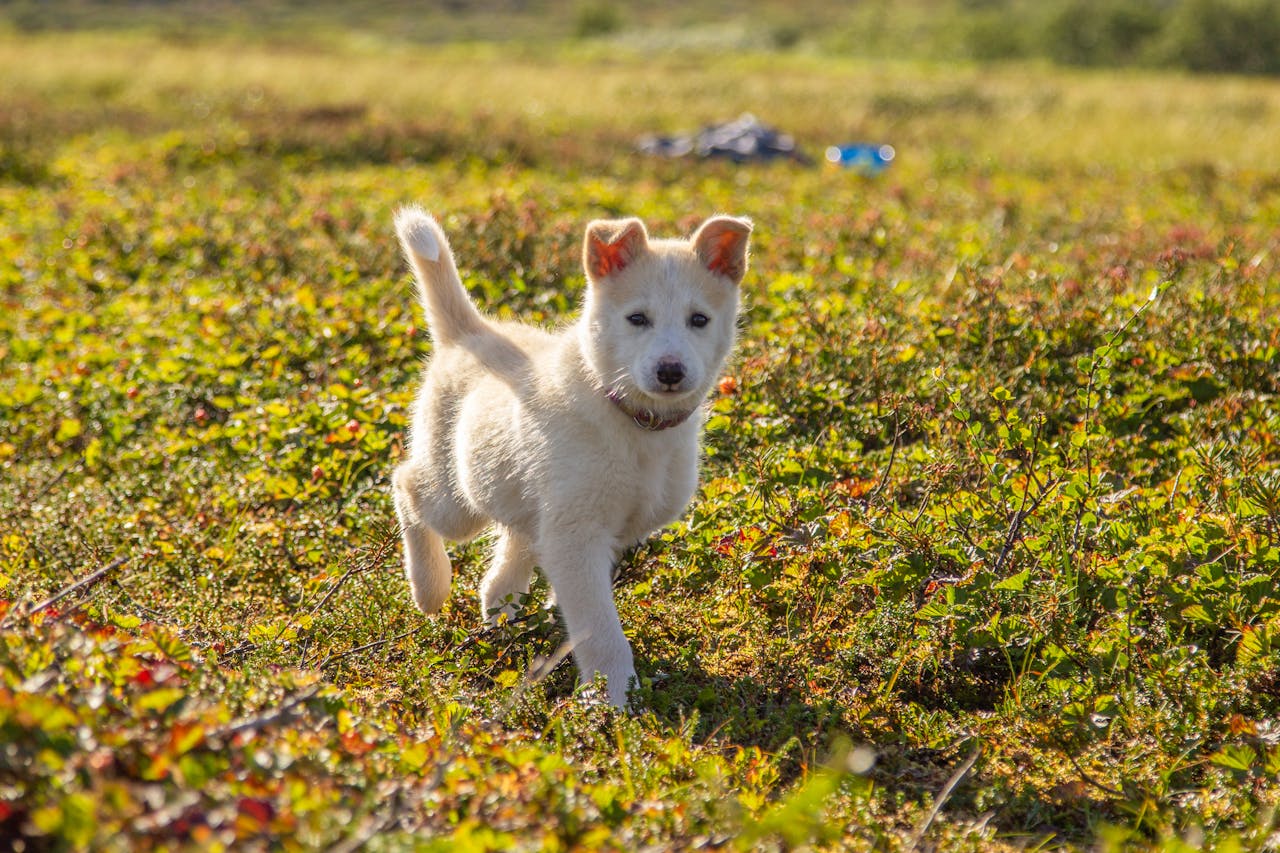
Dogs are sensitive to temperatures, and walking in extreme heat or cold can be uncomfortable for them.
Similarly, if your puppy is tired or hungry, they may not be in the mood for a walk.
Try to schedule walks during cooler parts of the day, like early morning or late evening.
Ensure your pup has had a meal and is well-rested before heading out.
However, avoid walking immediately after feeding as it can cause digestive issues.
Figuring out the best time for walks might involve a bit of trial and error.
Each dog is unique and what works for one might not work for another.
Observe your puppy and try to align their walk schedule with their most active periods of the day.
4. Choose the right leash and harness
The wrong type of leash or harness can make walks uncomfortable or even painful for your pup, causing them to associate walks with discomfort.
When choosing a leash, opt for one that’s lightweight yet sturdy.
A retractable leash can give your pup some freedom to explore while still being under control.
For harnesses, consider one that fits your puppy well but isn’t too tight.
A well-fitted harness should allow you to slip two fingers between the harness and your puppy’s body.
Harnesses that distribute pressure evenly across the chest are a good option as they don’t put strain on the neck.
You might need to try a few different types of leashes and harnesses before finding one that suits your puppy’s comfort and your handling needs.
Related Stories from Black Pearl Dogs
Once your pup is comfortable with their gear, they’ll be more likely to enjoy their walks.
5. Gradually increase the length of walks
It’s important to start with short walks and gradually increase the distance as your puppy becomes more accustomed.
Begin with a short walk around your yard or down your street.
As your puppy shows more comfort and enthusiasm, you can gradually extend the length and duration of the walks.
This gradual increase helps to build your puppy’s stamina and confidence over time.
Remember to respect your puppy’s pace.
If they seem tired or resistant, it’s okay to cut the walk short.
Pushing them beyond their comfort level can make them associate walks with exhaustion or discomfort, which is counterproductive.
6. Create a consistent routine
Puppies thrive on routine.
Having consistent walk times can help your puppy understand what to expect and when.
This consistency can significantly reduce their anxiety and resistance towards walks.
Try to schedule walks around the same times each day, such as in the morning and evening.
Having a set routine also helps with toilet training, as puppies typically need to relieve themselves after waking up, eating, and exercising.
7. Make walks interesting
Walks should be more than just a bathroom break or exercise time for your puppy – they should also be fun and stimulating.
Making walks interesting can spark your puppy’s curiosity and make them look forward to their daily strolls.
One way to add interest to walks is by varying your routes.
Different paths offer new sights, smells, and sounds that can keep your puppy engaged and excited.
You might also consider bringing along their favorite toy or incorporating some playtime during the walk.
Another method is to use walks as a training opportunity.
Simple commands like ‘sit’, ‘stay’, or ‘heel’ can be practiced during walks.
This not only adds a layer of mental stimulation but also helps improve your puppy’s obedience and behavior.
8. Socialize your puppy
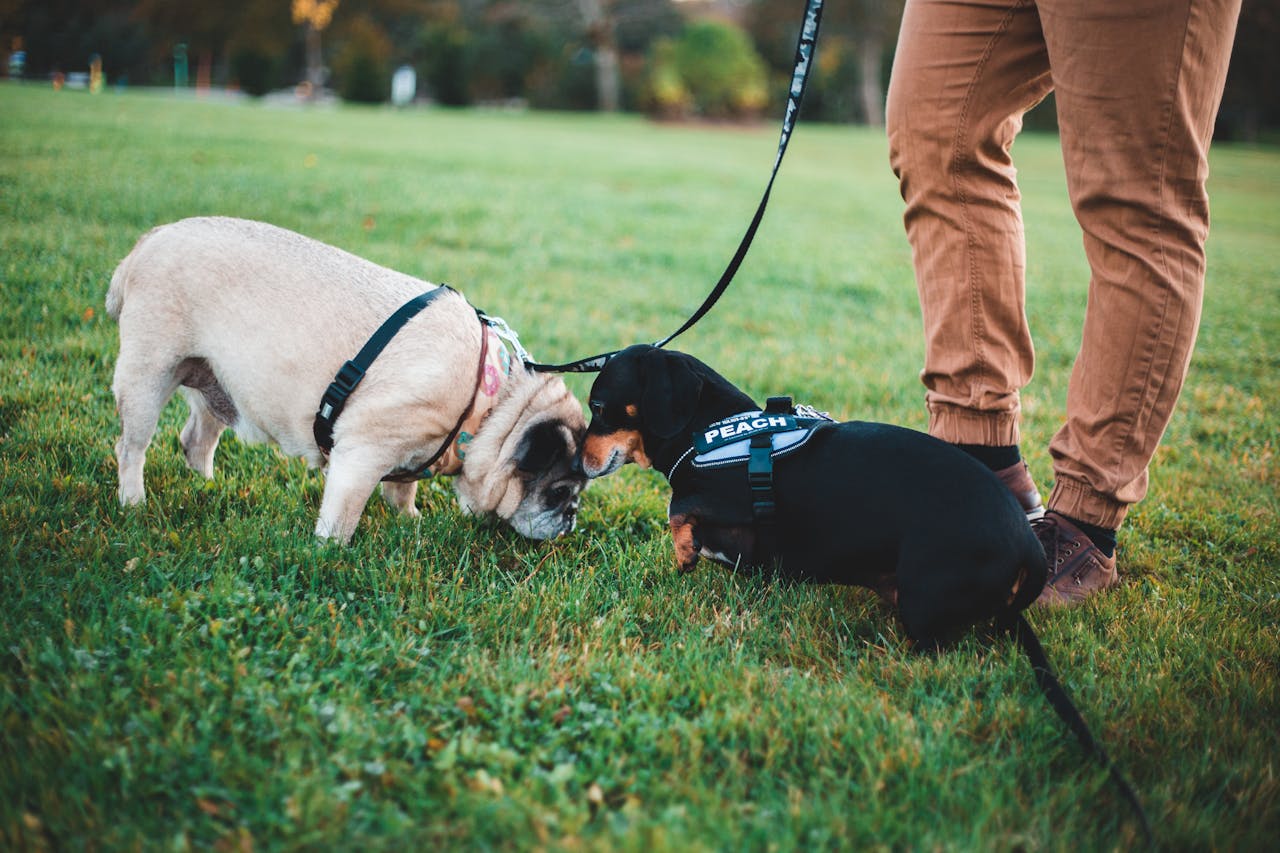
Socialization is a crucial aspect of your puppy’s development.
It helps them become accustomed to various environments, sounds, and creatures, including other dogs and people.
A well-socialized pup is more likely to be comfortable during walks.
Introduce your puppy to other dogs and humans during walks in a controlled manner.
Allow them to observe and interact at their own pace.
If they seem scared or overwhelmed, provide reassurance and remove them from the situation gently.
You can also use walks as an opportunity to expose them to different environments.
This might include busy streets, quiet parks, noisy construction sites, and more.
The more varied experiences they have, the more adaptable and confident they’ll become.
9. Consult a professional if necessary
A dog trainer or behaviorist can provide insights into your puppy’s behavior and offer personalized solutions.
If you notice signs of extreme fear, anxiety, or aggression, it’s best to seek professional help sooner rather than later.
These behaviors could be indicative of underlying issues that need to be addressed.
The ultimate goal is to ensure your puppy’s wellbeing and happiness.
Understanding your puppy’s behavior further
After implementing the strategies we’ve outlined, you’re likely to see a positive change in your puppy’s attitude towards walks.
But understanding your puppy doesn’t stop at getting them to enjoy walks.
There’s a whole world of behaviors, signals, and quirks that make your pup unique.
As pet parents, our job is to understand and cater to these behaviors for the wellbeing of our furry friends.
Becoming proficient in decoding your puppy’s body language and behavior can help you anticipate their needs better and strengthen your bond.


